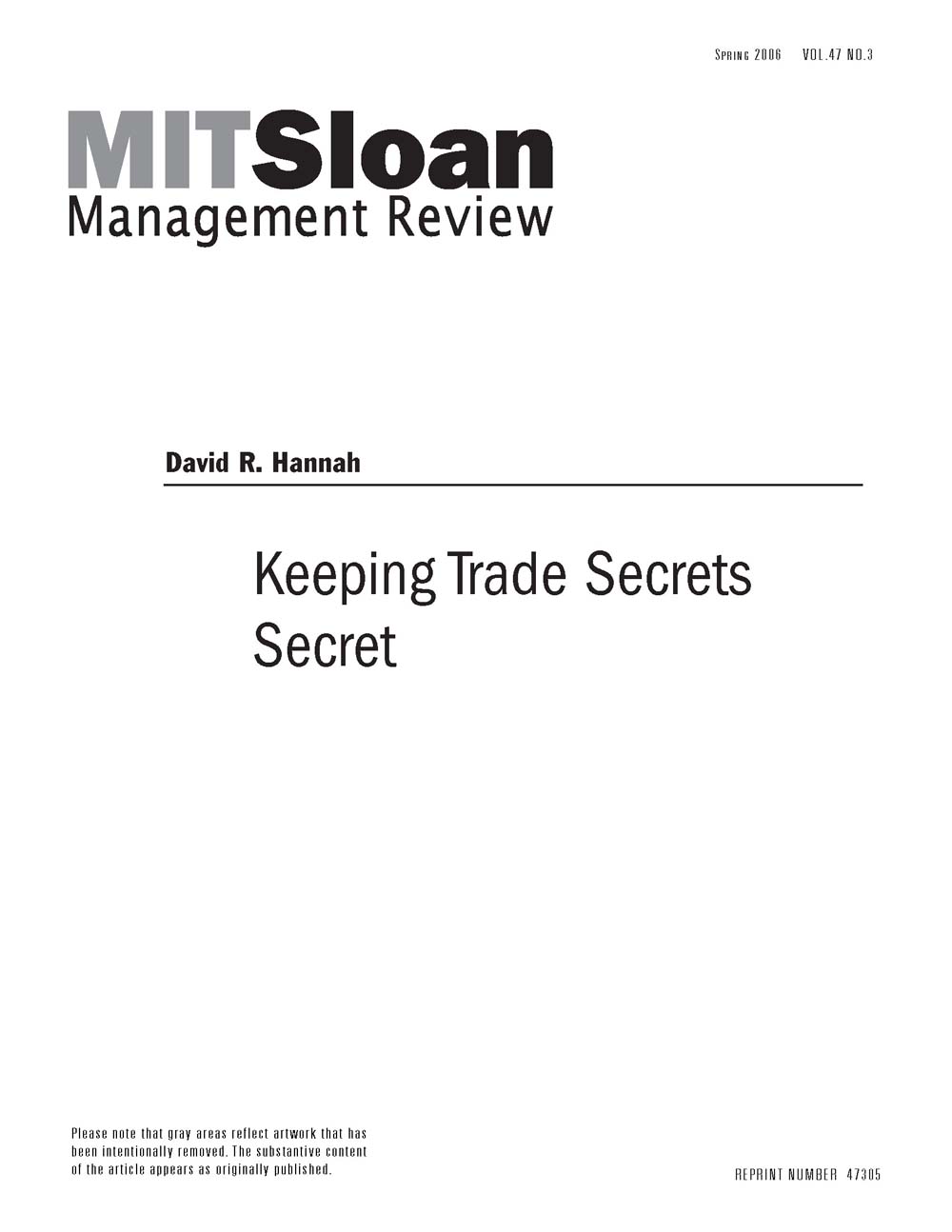
Keeping Trade Secrets Secret
Companies are incurring enormous losses from the misappropriation of their trade secrets. In a 2002 survey of more than 130 firms, 40% reported actual or suspected losses, and the data suggest the true figure might be significantly higher. The study also estimated that the companies represented by the survey participants -- the Fortune 1000 corporations and 600 additional small and medium-sized companies -- were likely to have experienced trade-secret and other intellectual-property losses of more than $50 billion during a one-year period. Research has shown that the biggest threat to a company's trade secrets comes not from spying competitors but from within: current and former employees. Consequently, the protection of trade secrets is largely a managerial issue, and firms need to take the appropriate measures to ensure that employees keep trade secrets from leaking. But many organizations make a number of crucial missteps, sometimes failing to implement the right precautions or relying on a well-intentioned but ineffective practice -- or worse, a wrongheaded policy that only leads to more information being divulged. The following are the most common mistakes: giving short shrift to new-employee orientations, not communicating regularly with employees, signaling to employees that they aren't trusted, punishing instead of helping employees, not practicing what is preached, forgetting to clarify who owns ideas, defining the scope of trade secrets too narrowly and failing to address the subject of departing employees. By avoiding such mistakes, companies can help ensure that their trade secrets indeed stay secret.




